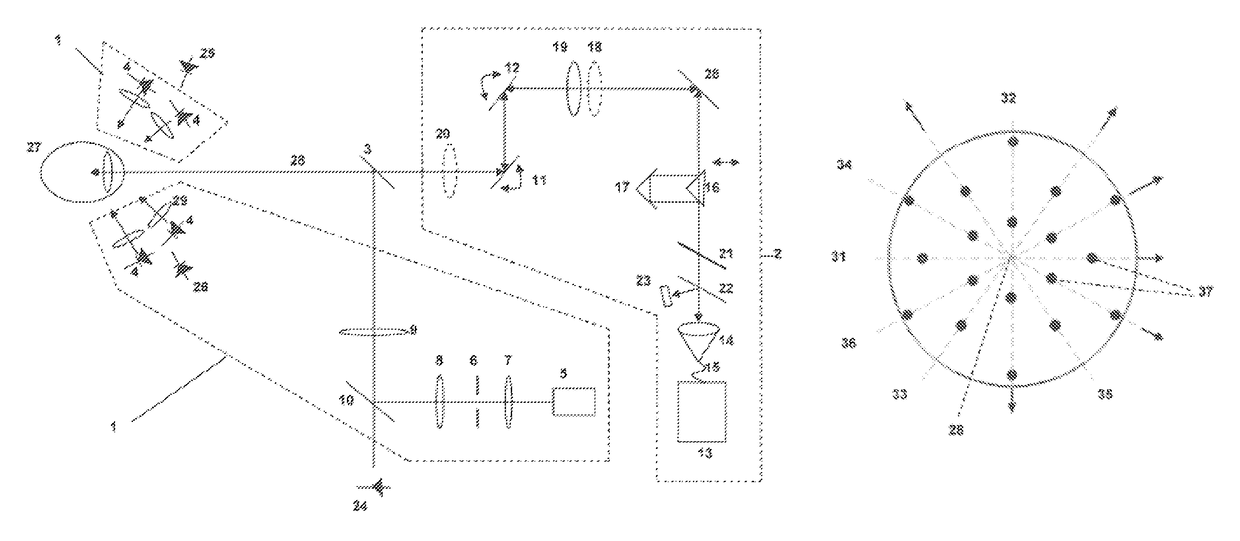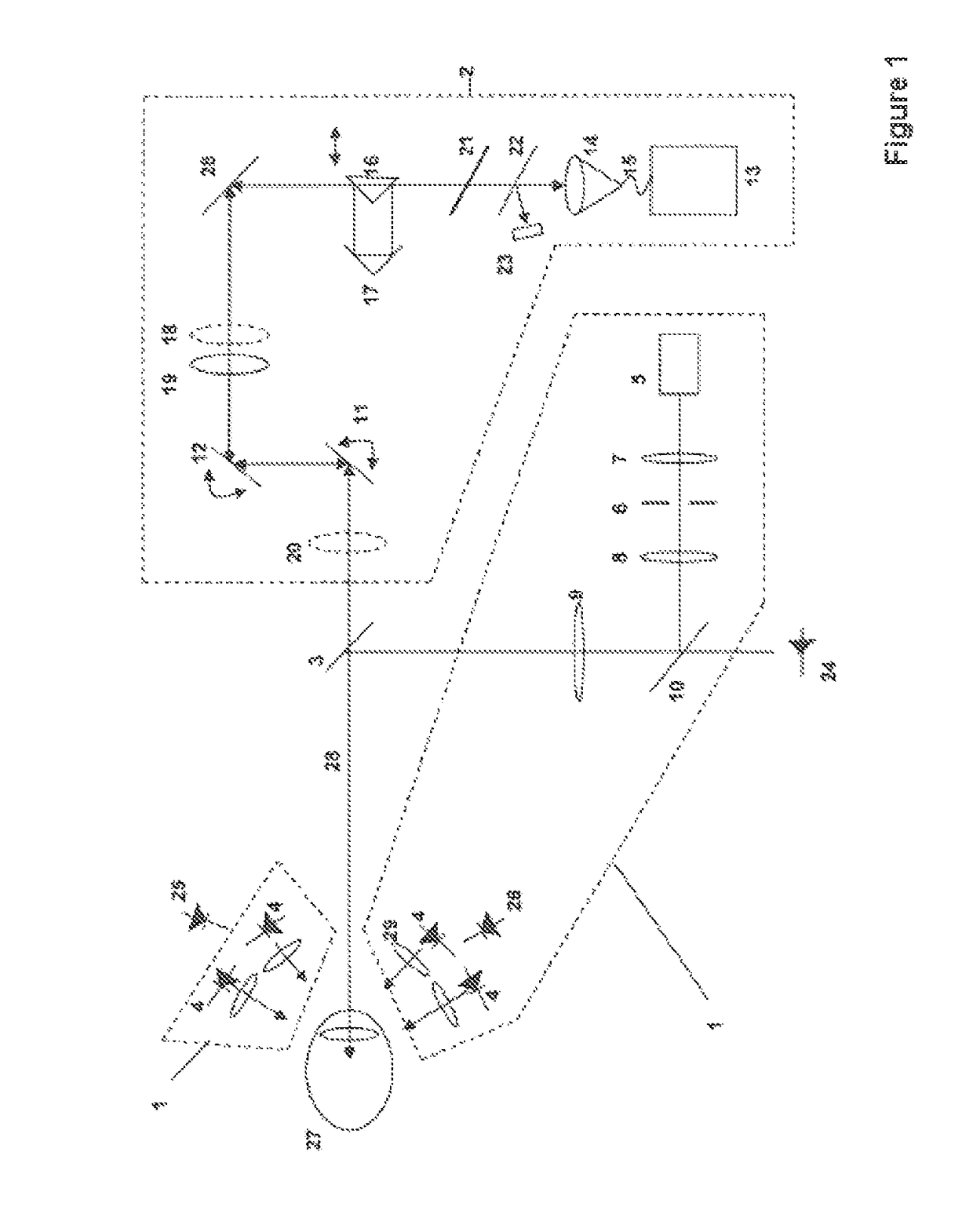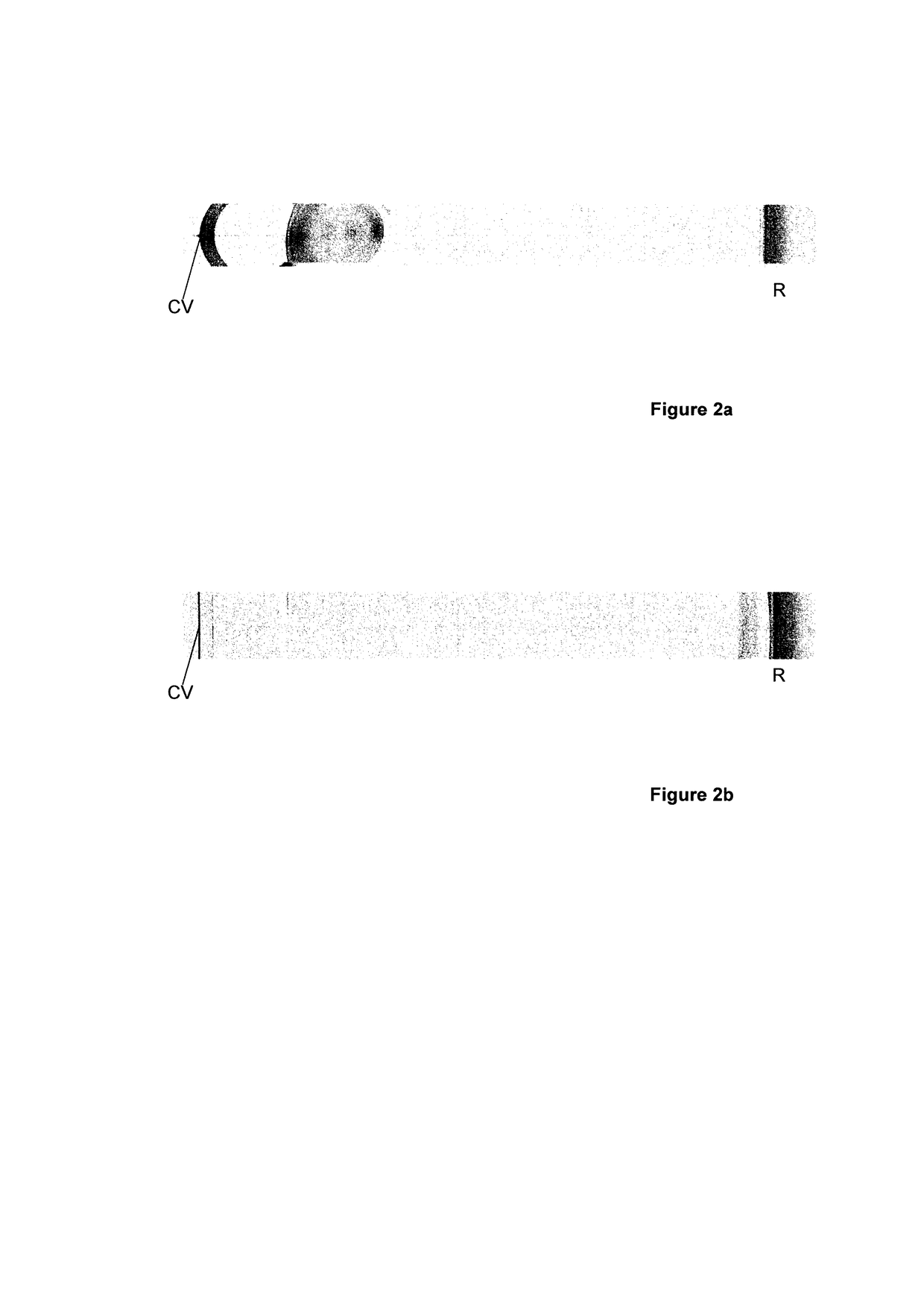Device for reliably determining biometric measurement variables of the whole eye
a biometric and eye technology, applied in the field of eye biometric measurement variables, can solve the problems of low gain from scheimpflug anterior chamber measurement compared to additional costs, and the combination cannot measure all parameters of the eye, so as to achieve fast, movement-free measurement of the a-scan over the whole eye length
- Summary
- Abstract
- Description
- Claims
- Application Information
AI Technical Summary
Benefits of technology
Problems solved by technology
Method used
Image
Examples
Embodiment Construction
[0027]The device according to the invention for measuring biometric variables of the eye for calculating intraocular lenses consists of a multi-point keratometer and an OCT arrangement, wherein the multi-point keratometer is configured such that the keratometer measurement points are illuminated telecentrically and detected telecentrically and that the OCT arrangement is designed as a laterally scanning swept-source system with a detection region detecting the whole eye over the whole axial length thereof.
[0028]FIG. 1 shows a basic optical design of the device: by means of the beam splitter 3, an OCT system 2 is unified with a multi-point keratometer system 1 on a common instrument axis 28 such that both can biometrically measure the eye 27 in a laterally assignable manner.
[0029]Here, the multi-point keratometer system 1 consists of several light sources, preferably LEDs 4, at different radial distances from the instrument axis 28. Lens attachments 29 ensure that the LEDs telecentri...
PUM
 Login to View More
Login to View More Abstract
Description
Claims
Application Information
 Login to View More
Login to View More - R&D
- Intellectual Property
- Life Sciences
- Materials
- Tech Scout
- Unparalleled Data Quality
- Higher Quality Content
- 60% Fewer Hallucinations
Browse by: Latest US Patents, China's latest patents, Technical Efficacy Thesaurus, Application Domain, Technology Topic, Popular Technical Reports.
© 2025 PatSnap. All rights reserved.Legal|Privacy policy|Modern Slavery Act Transparency Statement|Sitemap|About US| Contact US: help@patsnap.com



